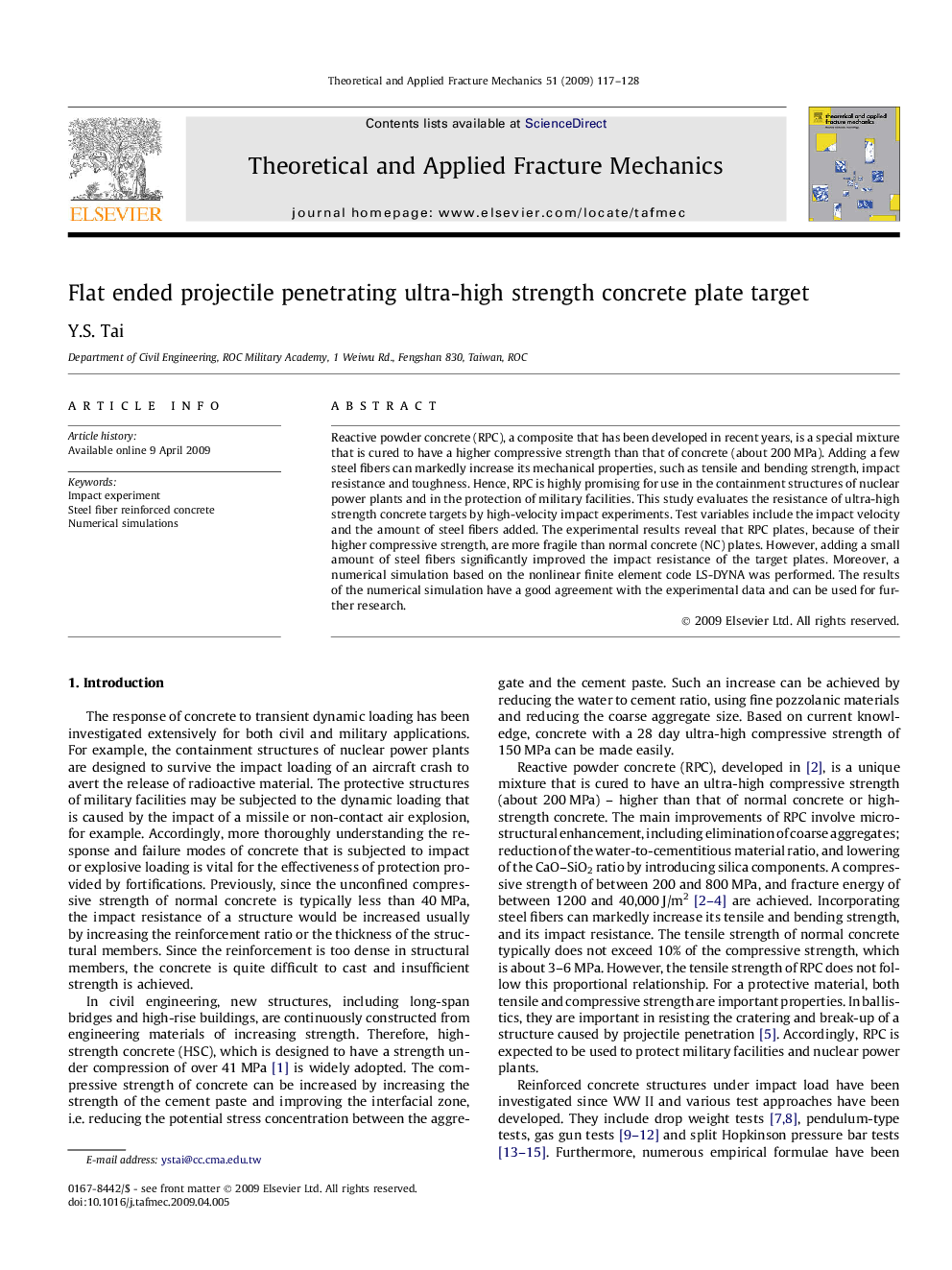| Article ID | Journal | Published Year | Pages | File Type |
|---|---|---|---|---|
| 807592 | Theoretical and Applied Fracture Mechanics | 2009 | 12 Pages |
Reactive powder concrete (RPC), a composite that has been developed in recent years, is a special mixture that is cured to have a higher compressive strength than that of concrete (about 200 MPa). Adding a few steel fibers can markedly increase its mechanical properties, such as tensile and bending strength, impact resistance and toughness. Hence, RPC is highly promising for use in the containment structures of nuclear power plants and in the protection of military facilities. This study evaluates the resistance of ultra-high strength concrete targets by high-velocity impact experiments. Test variables include the impact velocity and the amount of steel fibers added. The experimental results reveal that RPC plates, because of their higher compressive strength, are more fragile than normal concrete (NC) plates. However, adding a small amount of steel fibers significantly improved the impact resistance of the target plates. Moreover, a numerical simulation based on the nonlinear finite element code LS-DYNA was performed. The results of the numerical simulation have a good agreement with the experimental data and can be used for further research.
